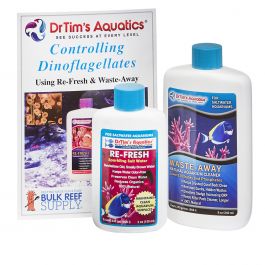- Joined
- Feb 9, 2020
- Messages
- 76
- Reaction score
- 138
Alright, hopefully the video provided a bit of a light-hearted intro to a not-so-light-hearted topic of discussion....Dinoflagellates!!
I know this topic has been beaten to death, however since I gather that it is probably the #1 discouragement and source of abuse for those unlucky souls who encountered the reefing devil to want to, or actually do, nuke a tank and walk away from the hobby altogether, I feel like it is an important topic to yet again consolidate everyone’s experiences.
So, let’s hear the war stories of your battles with Dinos!
What were the circumstances that led to a Dino bloom? If you know what caused it, great! If not, what was the state of your tank when they appeared? (Parameters, equipment, new additions, nutrient levels, age of tank, and anything else you think is important to mention)
What did you do on your own to try and solve the problem once it appeared? Did you try anything on your own at first, or did you go straight to the forums for answers?
What advice seemed the most promising at the time when you were faced with the problem? How and where did you discover this information? Did it help?
What bad advice did you follow that made the problem worse, hurt your tank, or caused your tank to completely crash? We’ve all been panicked and acted on the first piece of advice given only to have the problem get worse, or a new problem appear as a result only to look back on it or discover later that the advice you followed was not good and sometimes not even based on science or personal experience.
Were you able to beat the Dinoflagellates? If so, how? Please be specific knowing that today, tomorrow, or 5 years from now some poor desperate reefer is going to read your post and probably attempt it in their own system.
What do you know now that you wish you would’ve known then? What would you do differently? I know for myself, I learned that when starting a tank, it’s equally as important to not have too good of nutrient consumption, as it is to have filtration that can’t keep up. A new tank is a fragile world in which a misdirected fart can cause detrimental swings in water chemistry, and to just sit back and let natural processes do their thing. It’s been doing it’s thing for millions of years, so what do I think I’m bringing to the table to improve on the ancient and delicate balance of an establishing reef environment?
If you could provide words of comfort/caution to someone in the throws of a Dino battle, what would you say?
So let’s help some people out and have some fun while we help! With Dinos..gotta laugh to keep from crying right?
I’ll kick things off in my next post. Thanks all!
-T

















